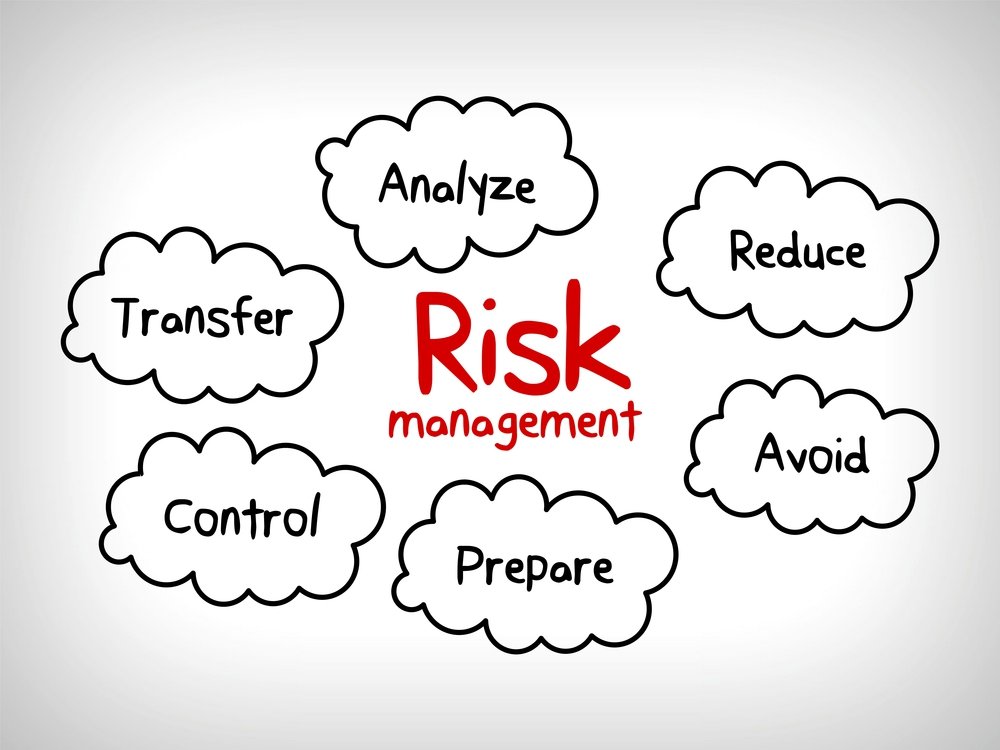Exploring the Expanding Importance of Risk Management in Corporate Strategy
Exploring the Expanding Importance of Risk Management in Corporate Strategy
Blog Article
The Essential Value of Risk Management in Getting Business Goals
In the swiftly evolving service landscape, the ability to navigate uncertainty has actually become an important. This is where Risk Management steps in, supplying an organized approach to determining, analyzing, and mitigating possible roadblocks to advance. It's even more than just a protective measure - it's a critical tool, fostering durability and technology. As we check out the important role of Risk Management in attaining organizational goals, one can not aid yet wonder: just how does this convert into real-world success?
Understanding the Concept of Risk Management in Business

The Important Function of Risk Management in Strategic Planning
Incorporating Risk Management into calculated planning serves as a protect for organizations, anchoring their long-lasting strategies with a strong structure of preparedness and resilience. It runs as the organization's radar, detecting possible risks and vulnerabilities that could interrupt the course in the direction of achieving their specified goals. Risk Management supplies a framework for preparing for unpredictabilities and devising suitable reactions, ensuring the organization's survival and prosperity even when faced with hardship. By integrating Risk Management into strategic planning, companies can transform these uncertainties into opportunities for development and innovation. This tactical interweaving of Risk Management fosters flexibility, making companies more durable and allowing them to browse the ever-changing service landscape confidently. Consequently, Risk Management comes to be a vital device in strategic planning, instrumental in securing lasting success.

Methods for Identifying, Assessing, and Prioritizing Risks
The process begins with Risk identification, utilizing devices such as SWOT analysis, which aids in determining potential threats and opportunities. Next, Risk evaluation is carried out to identify the possible influence and likelihood of each Risk. Dangers are focused on based on their prospective effect and possibility, enabling organizations to concentrate their sources on critical dangers.
Securing Business Workflow With Effective Risk Management
In business landscape fraught with uncertainties, efficient Risk Management plays a critical role in safeguarding business operations. It Your Domain Name functions as a protective guard, minimizing the damaging impacts of possible threats and making certain the smooth performance of all procedures. By identifying and analyzing possible hazards, Risk Management makes it possible for companies to establish durable contingency strategies. This preventive strategy help in preserving functional security, also when faced with unexpected circumstances. In essence, Risk Management is the lifeline that keeps the business operations afloat among rough waters. It makes sure not only the survival yet the sustainable development of an organization, making it a crucial device in accomplishing business goals. Hence, companies should invest in thorough Risk Management strategies to secure their operations.

Converting Prospective Risks to Opportunities: The Power of Risk Management
While prospective dangers could initially look like obstacles to organizational success, efficient Risk Management can change them into chances. A positive strategy to risk Management includes determining, analyzing, and prioritizing threats to develop methods that transform them right into possible benefits. This process demands the development of a risk-aware culture within the company, urging people to see threats as potential stimulants for adjustment and development, instead of mere dangers. importance of risk management. With this lens, possible hazards come to be possibilities to introduce, enhance procedures, and strengthen durability. Thus, by leveraging the power of Risk Management, organizations can not just safeguard their procedures yet additionally stimulate development and accomplish their goals in an uncertain organization setting.
Case Researches: Success Stories of Risk Management Driving Company Objectives
Effective execution of Risk Management strategies has generated excellent lead to various businesses, underscoring the values of this method. Multinational companies like Microsoft and Google, as an example, have actually leveraged Risk Management to reduce dangers and make use of opportunities, driving their business purposes ahead. Microsoft's proactive Risk Management method helped it pivot promptly during the 2020 pandemic, transitioning to remote work efficiently, therefore maintaining performance. Google, by analyzing and alleviating prospective risks in its cloud-based solutions, has ensured nonstop service, thereby reinforcing client trust. These instances show how effective Risk Management can not just guide companies free from prospective pitfalls yet also lead them towards their strategic objectives. Therefore, Risk Management is important to the search of business objectives.
Conclusion
To conclude, Risk Management is basically important in achieving business objectives. It provides an organized strategy to identifying, assessing, and dealing with prospective risks and opportunities. Greater than just mitigating dangers, visit homepage it additionally promotes technology, strength, and sustainable growth. By integrating Risk Management into tactical preparation, services can better browse uncertainties, secure operations, and capitalise on possibilities, thus aligning with long-term goals.
At its core, Risk Management is the process of recognizing, assessing, and dealing with prospective risks that can negatively impact a company's operations or purposes. Next, Risk evaluation is performed to determine the prospective influence and likelihood of each Risk. Risks are he said focused on based on their possible influence and likelihood, permitting companies to concentrate their resources on high-priority risks. By determining and assessing potential dangers, Risk Management makes it possible for organizations to establish durable contingency strategies. An aggressive technique to risk Management involves recognizing, evaluating, and focusing on risks to design techniques that transform them into prospective benefits.
Report this page